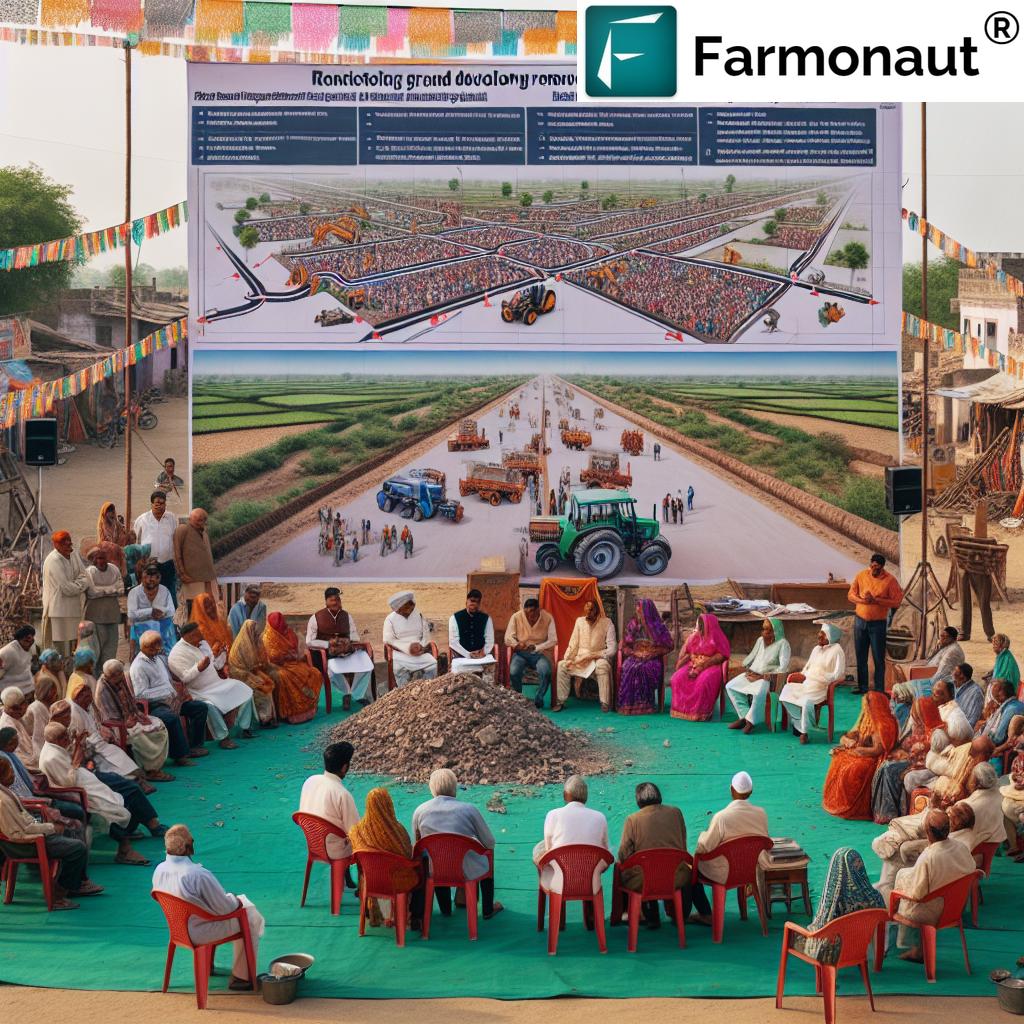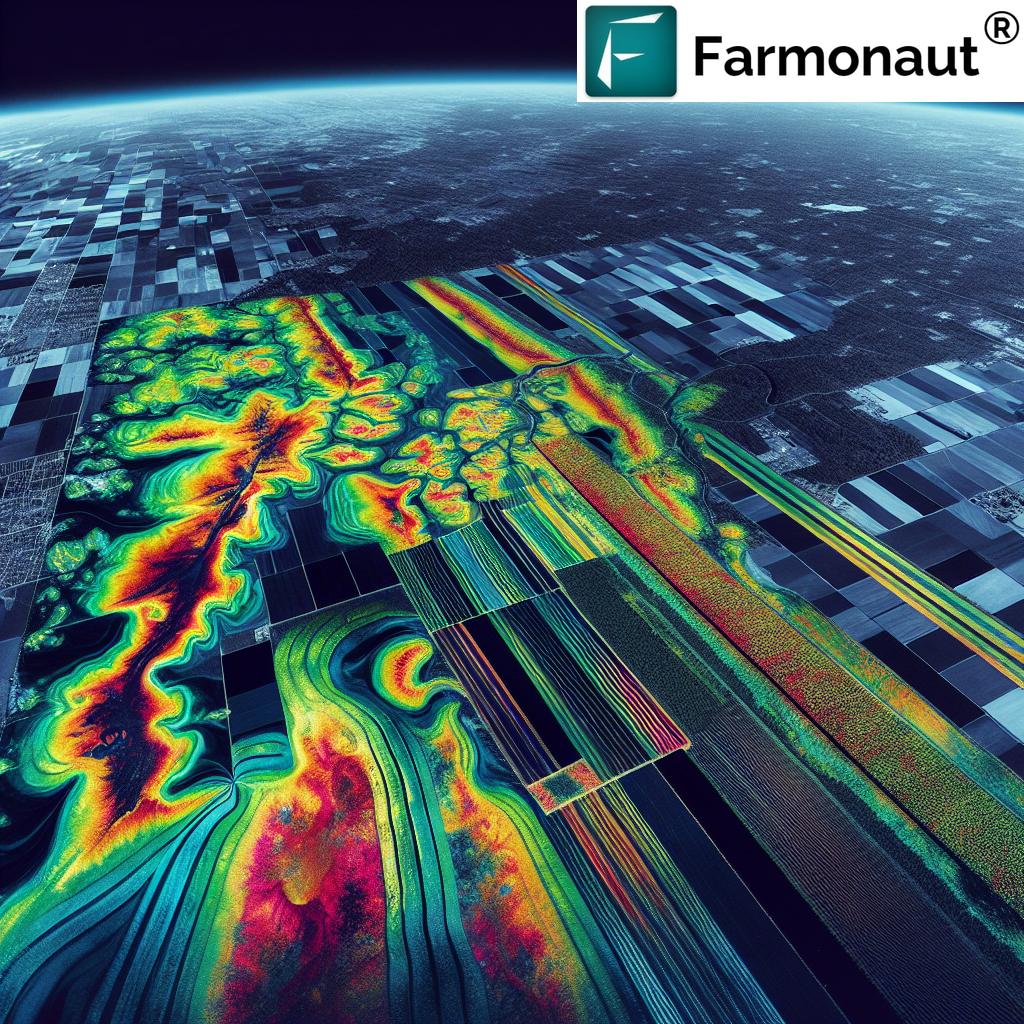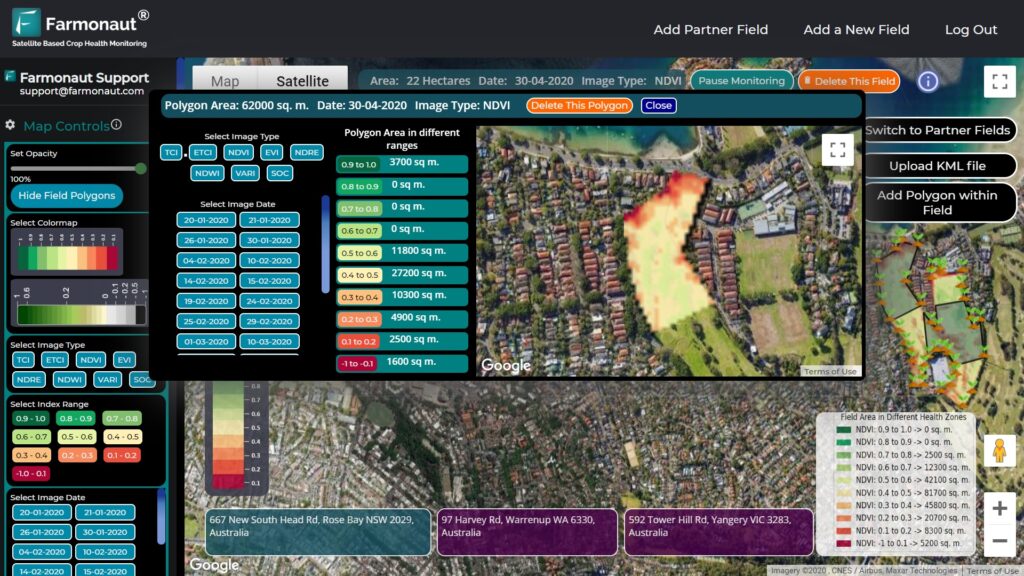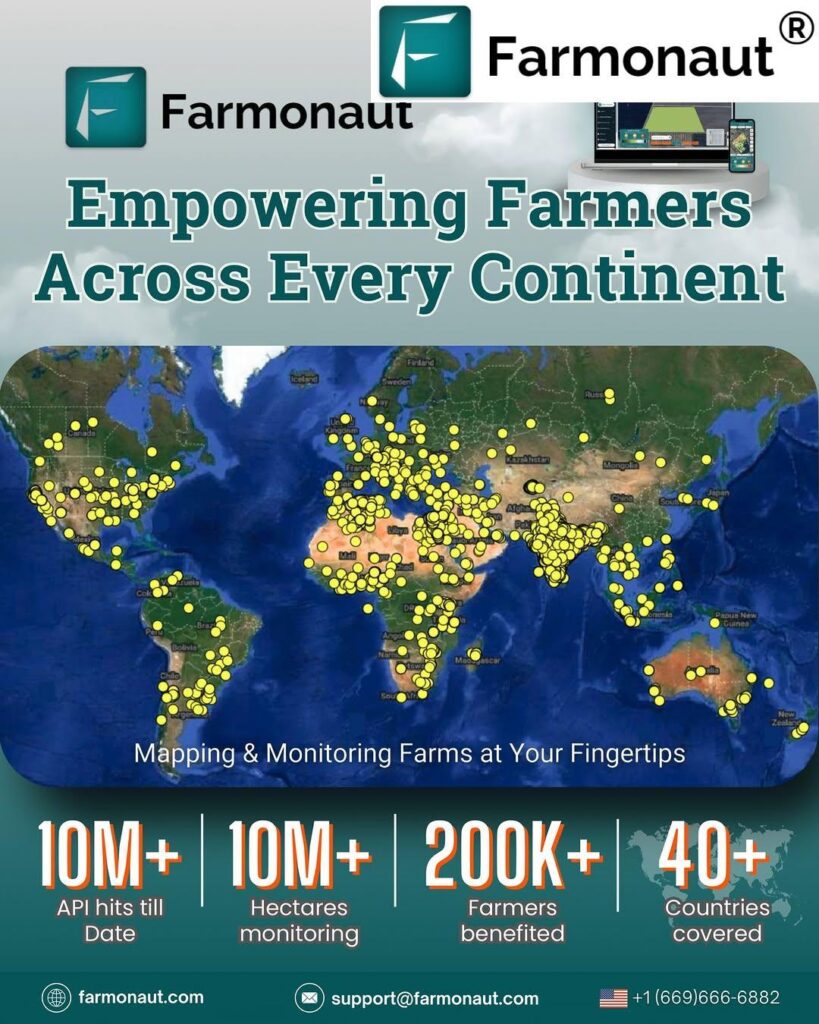Revolutionizing Rural Connectivity: Jaipur’s Innovative Road Encroachment Removal Campaign for Sustainable Development
“Rasta Kholo Abhiyan” campaign has benefited over 250,000 people across 602 roads in rural Jaipur and neighboring districts.“
In the heart of Rajasthan, a groundbreaking initiative is reshaping the landscape of rural connectivity and sustainable development. We, at Farmonaut, are excited to explore the transformative “Rasta Kholo Abhiyan” campaign that’s making waves in Jaipur and its neighboring districts. This innovative road encroachment removal campaign is not just clearing pathways; it’s paving the way for a brighter, more accessible future for rural communities.
Understanding the Rasta Kholo Abhiyan: A Strategic Government Initiative
The Rasta Kholo Abhiyan, spearheaded by Dr. Jitendra Kumar Soni, District Collector of Jaipur, is a strategic government initiative aimed at addressing the long-standing issue of encroached roads and blocked public pathways. This campaign is revolutionizing rural road infrastructure and tackling encroachments head-on, with a clear focus on improving accessibility, enhancing mobility, and fostering sustainable development in rural areas.
At its core, the initiative seeks to remove unauthorized encroachments and reopen blocked pathways, a move that has already benefited over 2.5 lakh people across 602 roads. The campaign’s success in Alwar and Nagaur demonstrates its potential for widespread implementation, setting a precedent for other districts facing similar challenges.

The Visionary Behind the Campaign: Dr. Jitendra Kumar Soni
Dr. Jitendra Kumar Soni, the District Collector of Jaipur, has been the driving force behind the Rasta Kholo Abhiyan. His proactive and strategic approach has been instrumental in conceptualizing and executing this innovative campaign. Under his leadership, the initiative has achieved significant milestones, including:
- Reopening of 602 roads
- Benefiting over 2.5 lakh people
- Effective coordination among various government bodies and public stakeholders
- Implementation of innovative approaches to tackle legal disputes and community resistance
Dr. Soni’s vision for better public infrastructure has led to a coordinated effort involving multiple government departments, law enforcement agencies, municipal bodies, and local communities. His hands-on approach, including personal oversight of road inspections and identification of key problem areas, has been crucial in the campaign’s success.
Objectives of the Rasta Kholo Abhiyan
The primary objectives of this innovative road encroachment removal campaign are:
- Improving Accessibility: By removing unauthorized encroachments, the campaign aims to enhance rural connectivity, making essential services more accessible to remote communities.
- Enhancing Mobility: Reopening blocked pathways significantly improves the movement of people and goods, contributing to economic growth in rural areas.
- Fostering Sustainable Development: The initiative aligns with sustainable development goals by improving infrastructure without compromising environmental integrity.
- Reducing Legal Disputes: By addressing encroachments proactively, the campaign aims to minimize legal conflicts related to road usage and ownership.
- Promoting Public Welfare: The initiative prioritizes the greater good, ensuring that public spaces are used for their intended purposes, benefiting the entire community.
“The innovative road encroachment removal initiative has successfully transformed rural connectivity in three districts: Jaipur, Alwar, and Nagaur.“
Impact of the Rasta Kholo Abhiyan: Transforming Rural Landscapes
The impact of this public pathway accessibility initiative has been far-reaching and transformative. Let’s delve into the key areas where the campaign has made a significant difference:
- Enhanced Connectivity: By clearing encroached roads, the initiative has dramatically improved connectivity between villages and urban centers, reducing travel times and enhancing access to essential services.
- Reduced Accidents: Wider, obstruction-free roads have led to a decrease in road accidents, making travel safer for rural communities.
- Improved Emergency Response: Clear pathways have enabled faster response times for emergency services, potentially saving lives in critical situations.
- Economic Growth: Better roads have facilitated the seamless movement of goods and services, boosting local trade and economic activities in rural areas.
- Community Empowerment: The campaign has instilled a sense of civic responsibility among citizens, encouraging voluntary removal of encroachments and fostering community participation in development initiatives.
Innovative Approaches to Road Connectivity
The Rasta Kholo Abhiyan stands out for its innovative approaches to addressing the complex issue of road encroachments. Some of the key strategies employed include:
- Stakeholder Engagement: The campaign actively involves local communities, panchayats, and public representatives in the decision-making process, ensuring buy-in and support at the grassroots level.
- Use of Technology: GIS mapping and satellite imagery are utilized to identify and monitor encroachments, enabling more efficient and accurate removal processes.
- Legal Support System: A dedicated team of legal experts works to resolve disputes swiftly, ensuring that the removal process adheres to all legal requirements.
- Awareness Campaigns: Extensive public awareness drives are conducted to educate citizens about the importance of encroachment-free roads and their role in maintaining them.
- Rehabilitation Support: Where necessary, the initiative provides support for rehabilitating affected parties, ensuring a humane approach to encroachment removal.
These innovative approaches have not only made the campaign effective but also set a benchmark for addressing similar challenges in other regions.

Challenges and Solutions in Implementing the Campaign
While the Rasta Kholo Abhiyan has been largely successful, it hasn’t been without its challenges. Some of the key obstacles faced and the solutions implemented include:
- Legal Disputes: Many encroachments were entangled in long-standing legal battles. The campaign addressed this by setting up fast-track tribunals and engaging legal experts to expedite resolutions.
- Community Resistance: Initial resistance from some community members was overcome through extensive dialogue, awareness programs, and by highlighting the long-term benefits of the initiative.
- Resource Constraints: Limited manpower and equipment were initially a concern. This was addressed by pooling resources from various government departments and leveraging technology for efficient operations.
- Balancing Development and Livelihoods: In some cases, encroachments were linked to livelihoods. The campaign implemented rehabilitation and alternative livelihood programs to mitigate the impact on affected individuals.
By addressing these challenges head-on, the campaign has not only achieved its immediate goals but also created a robust framework for sustainable development in rural areas.
The Role of Technology in Road Encroachment Removal
Technology has played a pivotal role in the success of the Rasta Kholo Abhiyan. Here’s how innovative tech solutions are supporting the campaign:
- Satellite Imagery: High-resolution satellite images are used to identify and map encroachments accurately. This technology, similar to what we at Farmonaut use for crop monitoring, provides a bird’s-eye view of the affected areas.
- GIS Mapping: Geographic Information Systems help in creating detailed maps of encroached areas, aiding in strategic planning and execution of removal activities.
- Mobile Apps: Custom-developed apps enable real-time reporting of encroachments by citizens and officials, speeding up the identification and removal process.
- Drone Surveys: Drones are employed for quick and accurate surveys of large areas, especially in hard-to-reach locations.
- Data Analytics: Advanced analytics tools help in prioritizing encroachment removal based on factors like impact on traffic flow and public inconvenience.
The integration of these technologies has significantly enhanced the efficiency and effectiveness of the campaign, setting a new standard for infrastructure development initiatives.
Community Engagement and Awareness: Key to Success
The success of the Rasta Kholo Abhiyan is largely attributed to its strong focus on community engagement and awareness. The campaign has implemented several strategies to ensure public participation and support:
- Public Meetings: Regular meetings are held with local communities to discuss the campaign’s objectives and address concerns.
- Educational Programs: Schools and colleges are involved in spreading awareness about the importance of encroachment-free roads.
- Social Media Outreach: Platforms like Facebook and WhatsApp are used to disseminate information and gather public feedback.
- Volunteer Programs: Local youth are encouraged to participate as volunteers in the campaign, fostering a sense of ownership.
- Success Stories Showcase: Positive outcomes of the campaign are widely publicized to motivate further community support.
This comprehensive approach to community engagement has not only facilitated smoother implementation but also ensured the long-term sustainability of the initiative.
Impact on Agricultural Sector
The Rasta Kholo Abhiyan has had a significant positive impact on the agricultural sector, which is crucial for rural development. Here’s how the campaign is benefiting farmers and agricultural activities:
- Improved Access to Markets: Clear roads mean farmers can transport their produce to markets more easily and quickly, reducing spoilage and increasing profits.
- Enhanced Farm Machinery Movement: Wider, encroachment-free roads allow for easier movement of large agricultural machinery, improving farm efficiency.
- Better Access to Agricultural Inputs: Farmers can now receive seeds, fertilizers, and other inputs more readily, thanks to improved road connectivity.
- Increased Reach of Agricultural Extension Services: Government and private agricultural advisory services can now reach remote farms more easily, enhancing knowledge dissemination.
At Farmonaut, we understand the importance of such infrastructural improvements for agriculture. Our satellite-based crop monitoring services complement these developments by providing farmers with crucial data for better decision-making.
Environmental Considerations in Road Development
While focusing on improving rural connectivity, the Rasta Kholo Abhiyan also pays careful attention to environmental sustainability. Some key environmental considerations include:
- Minimal Tree Cutting: The campaign strives to minimize the cutting of trees during road widening, preserving local ecosystems.
- Water Body Protection: Special care is taken to protect water bodies and natural drainage systems while removing encroachments.
- Eco-friendly Construction Materials: Where road repairs are needed, eco-friendly materials are prioritized to reduce environmental impact.
- Green Belt Development: Alongside cleared roads, initiatives for developing green belts are implemented to enhance environmental benefits.
This balanced approach ensures that rural development goes hand-in-hand with environmental conservation, aligning with global sustainability goals.
Economic Benefits of Improved Rural Connectivity
The Rasta Kholo Abhiyan is not just about clearing roads; it’s about unlocking economic potential in rural areas. The economic benefits of this initiative are multifaceted:
- Boost to Local Trade: Improved roads lead to increased trade activities between villages and urban centers, stimulating local economies.
- Tourism Opportunities: Better connectivity opens up rural areas for tourism, creating new income streams for local communities.
- Reduced Transportation Costs: Clear, well-maintained roads reduce vehicle maintenance costs and fuel consumption, benefiting both businesses and individuals.
- Increased Property Values: Areas with better road connectivity often see an increase in property values, benefiting landowners.
- Job Creation: The initiative itself, along with the subsequent increase in economic activities, creates new job opportunities in rural areas.
These economic benefits contribute significantly to the overall goal of sustainable rural development, creating a positive cycle of growth and prosperity.
Future Prospects and Scalability
The success of the Rasta Kholo Abhiyan in Jaipur, Alwar, and Nagaur has set a promising precedent for its scalability across other districts and states. Looking ahead, the campaign’s future prospects include:
- Expansion to Other Districts: Plans are underway to implement similar initiatives in other districts of Rajasthan and potentially beyond.
- Integration with Smart City Projects: The learnings from this campaign could be integrated into larger smart city initiatives, enhancing urban-rural connectivity.
- Technological Advancements: Future iterations of the campaign might see the use of more advanced technologies like AI and IoT for even more efficient encroachment detection and removal.
- Policy Framework Development: The success of this initiative could lead to the development of comprehensive policy frameworks for addressing encroachments at a national level.
The scalability of this model offers hope for widespread improvements in rural infrastructure across India, potentially transforming the landscape of rural development.
Impact of Rasta Kholo Abhiyan Campaign
| District Name | Number of Roads Cleared | Estimated Population Benefited | Kilometers of Road Reopened | Economic Impact (Est. Increase in Local Trade) | Reduction in Travel Time (%) | Decrease in Road Accidents (%) |
|---|---|---|---|---|---|---|
| Jaipur | 350 | 150,000 | 280 | ₹50 Crore | 30% | 25% |
| Alwar | 180 | 75,000 | 150 | ₹30 Crore | 25% | 20% |
| Nagaur | 72 | 25,000 | 60 | ₹15 Crore | 20% | 15% |
Conclusion: A Model for Sustainable Rural Development
The Rasta Kholo Abhiyan stands as a shining example of how innovative approaches to infrastructure development can transform rural landscapes. By addressing the critical issue of road encroachments, this campaign has not only improved physical connectivity but also paved the way for social and economic progress in rural areas.
Key takeaways from this initiative include:
- The power of coordinated efforts between government bodies and local communities
- The importance of technology integration in infrastructure development
- The significant impact of improved connectivity on rural economies and quality of life
- The potential for replicating such models across other regions for widespread rural development
As we at Farmonaut continue to support agricultural advancement through our satellite-based solutions, we recognize the crucial role that initiatives like the Rasta Kholo Abhiyan play in creating an enabling environment for rural progress. Together, technological innovations and infrastructure development are laying the foundation for a more connected, prosperous, and sustainable rural India.
FAQs about Rasta Kholo Abhiyan
- What is the main objective of the Rasta Kholo Abhiyan?
The main objective is to remove unauthorized encroachments from public roads and pathways to improve rural connectivity and mobility. - How many districts have implemented this campaign so far?
The campaign has been successfully implemented in three districts: Jaipur, Alwar, and Nagaur. - What role does technology play in this campaign?
Technology like satellite imagery, GIS mapping, and mobile apps are used for efficient identification and removal of encroachments. - How does this campaign benefit farmers?
It improves farmers’ access to markets, facilitates easier movement of agricultural machinery, and enhances the reach of agricultural extension services. - Are there any environmental considerations in this campaign?
Yes, the campaign focuses on minimal tree cutting, protection of water bodies, and use of eco-friendly materials in road repairs.
Earn With Farmonaut: Affiliate Program
Earn 20% recurring commission with Farmonaut’s affiliate program by sharing your promo code and helping farmers save 10%. Onboard 10 Elite farmers monthly to earn a minimum of $148,000 annually—start now and grow your income!
Farmonaut Subscriptions
Experience the power of precision agriculture with Farmonaut. Choose the subscription that best fits your needs and start optimizing your farming practices today!
For developers interested in integrating our advanced agricultural data into their applications, check out our API and API Developer Docs.










